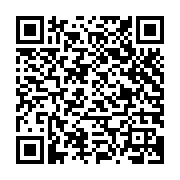PAPER BAG BLACKBURNS BAKERY
c. 1940A roughly square brown paper bag with black text above and under a square boardered illustration of a single storey suburban house with trees to the left and a road and pavement at the front. Parked on the road is a black delivery van with [SERVICE] written on the side. At the back of the van is a man in a white top opening the back doors. Three lines above the image and four lines under the image [BLACKBURN'S / ARMADALE BAKERY / for / WE DELIVER THE GOODS! / Bakers, Confectioners, Cool Drinks, Ice- / Cream, and all other Seasonable Supplies / Phone 44].
In 1987 plans to expand the Armadale Shopping City meant that the Congregational Church (built in 1903) and original Armadale School Building (built in 1899), both on the corner of Church Avenue and Third Road were going to be demolished.
A community group was soon formed relocate the two buildings to Minnawarra Park, next door to History House Museum. The Church was demolished but the community was able to organise for all of the original building materials to be collected and the church was rebuilt at Minnawarra Park.
The school was saved from demolition and after extensive fund-raising. The school was moved to its new home on the back of a truck. In preparation for the move volunteers cleaned out the school building including the air vents and under the floorboards. When doing this they found a collection of material lost, hidden or dumped by students and teachers from a variety of time periods.
Blackburn's Bakery was located in Jull Street and operated from the mid 1930s to 1967. It was operated by Robert 'Bob' Blackburn and his wife Gwen. They had three children, Laurie, Lorna and Ian who all helped out in the bakery and attended Armadale State School in the 1930s and 1940s.
Details
Details
This collection of material found under the floor boards and in the ventilation shafts of the original Armadale school building (1899-1987) represents the experiences of local children and their teachers who attended the school over a 87 year period. The collection includes objects representing the food they ate, stores that they and their families frequented, games they played, clothes the wore, school activities and classes they participated in, how school work was conducted, examples of handwriting and what they did for fun openly and possibly secretly.
